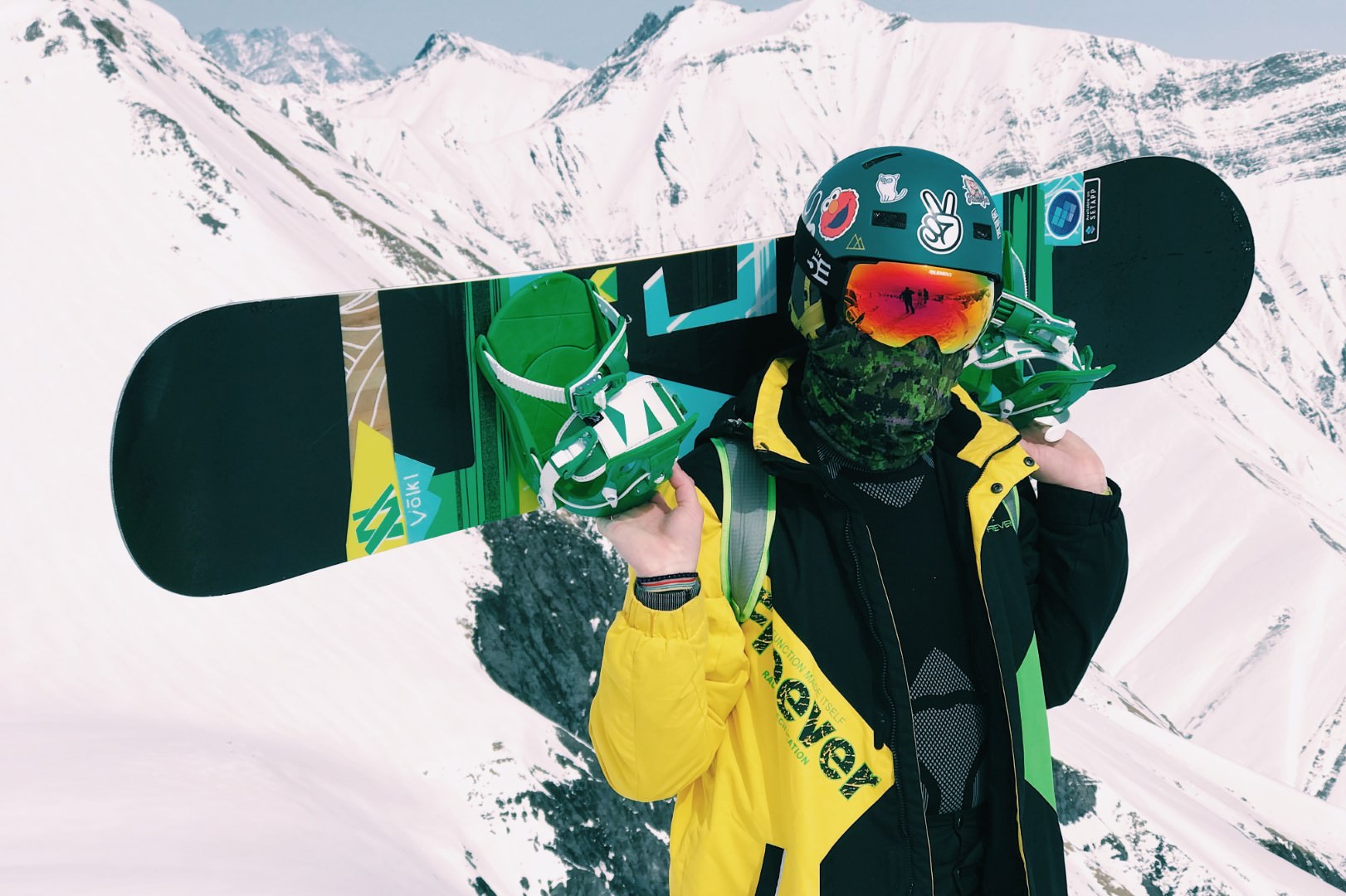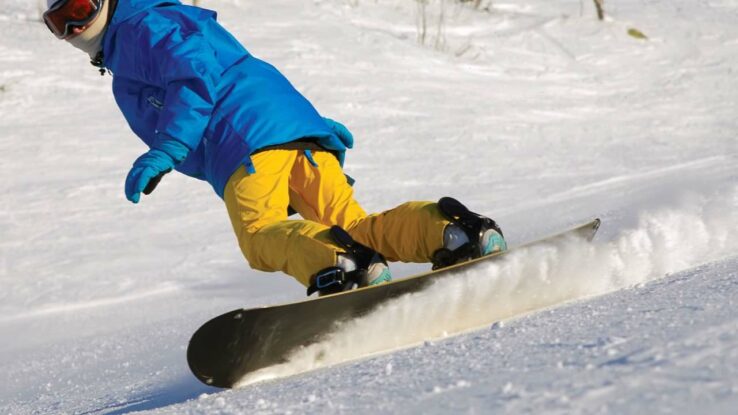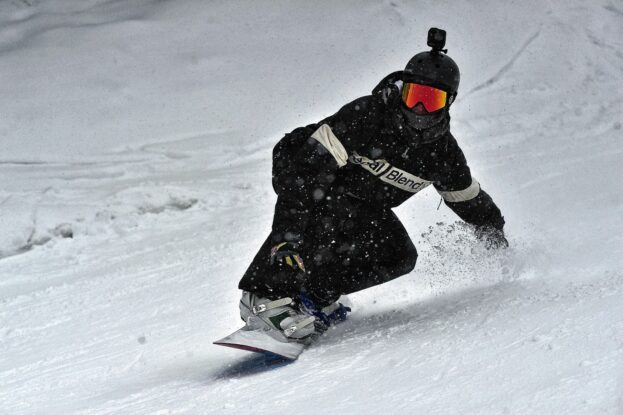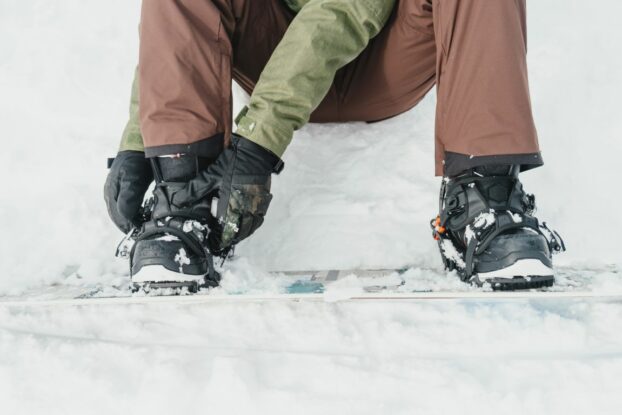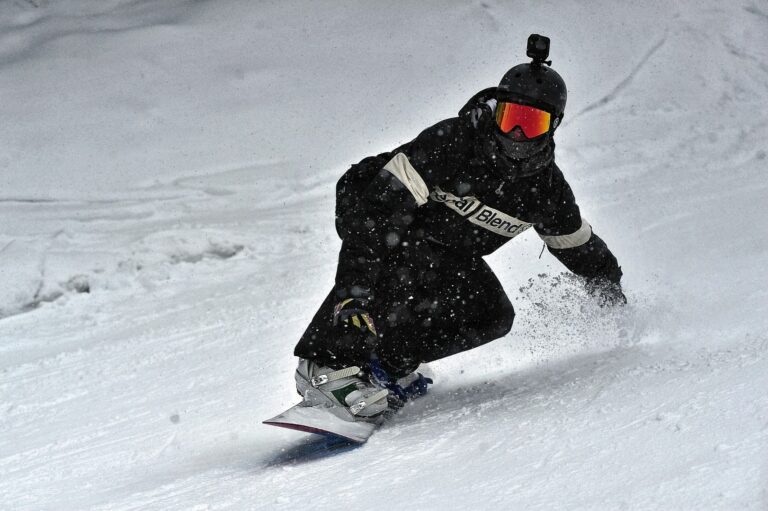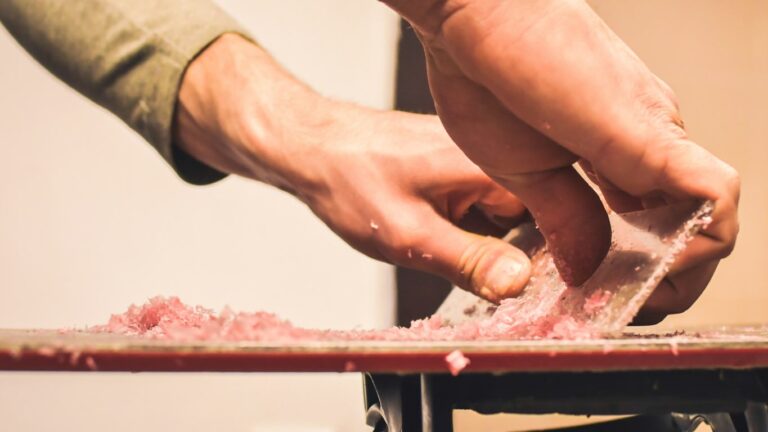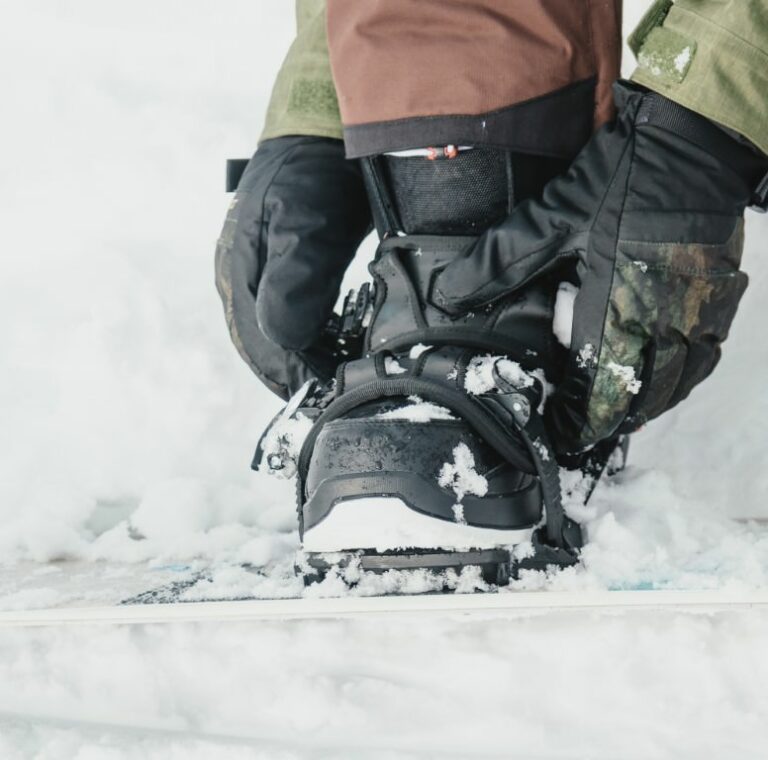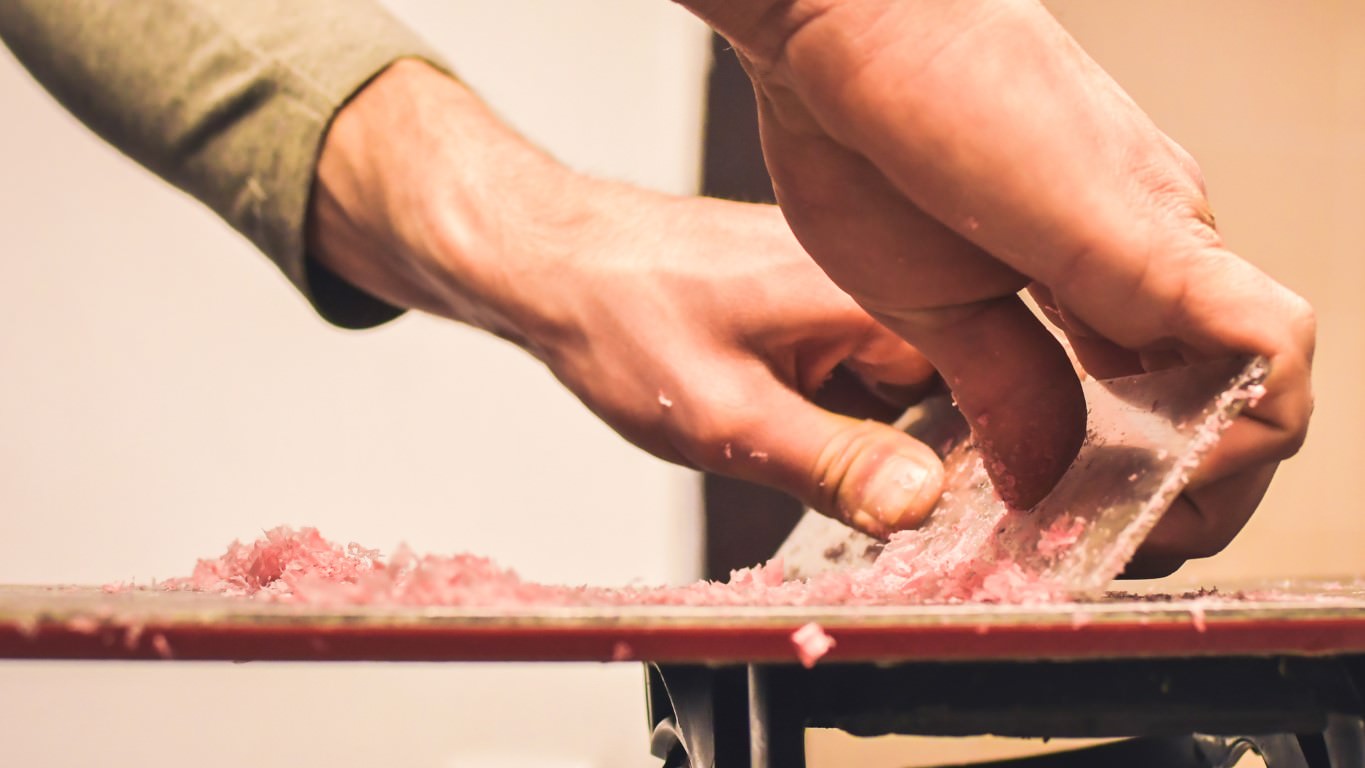The Importance of Choosing the Right Snowboard for Your Circumstances
Choosing the right snowboard for you is as important as finding the right shoes to wear on your feet. Size, ability level, terrain choice and budget will all come into consideration. There is not one “perfect” snowboard out there for you. However, there are a number of snowboards that will be right for you in most ways.
Selecting the right snowboard allows you the ability to get comfortable with riding, progressing with the sport and providing you with the right performance. The most expensive snowboard setup might not be right for you, so don’t let price or a certain marketing image influence your decision.
Understand Snowboard Types: Freestyle, Freeride, All-Mountain or Powder?
There are several different categories of snowboards. These include Freestyle, All-Mountain, Freeride, Splitboards or a hybrid of any previously stated. Each one is designed with a different riding style and terrain choice in mind. Let’s go through each.
Freestyle (Park)
Freestyle snowboards are primarily used in the terrain park or on the slopes for side hits and natural features. This design excels at performing tricks, jumps, rails and drops. Freestyle snowboards are usually designed symmetrically with the same shape in the nose and the tail. The design is known as a twin. This allows riders to land regular or switched with ease. Due to this design, the board does not do well in powder, riding fast on groomers or on steep terrain. These types of snowboards are specialized for the terrain park only.
Freestyle snowboards are usually a bit on the softer side for flex, however they can also have a medium flexibility. Jib snowboards that are primarily used for rails and butters deform extremely easily, allowing riders to press into features and have more balance. Think shock absorber.
Riders that prefer more jumps will opt for a stiffer snowboard that supports carving performance and control at the higher speeds. This is usually required to clear larger features in the terrain park.
Freeride
Freeride snowboards are usually intended for riding steep and deep terrain, fast carving and generally, riding aggressively. They can also be used to explore the backcountry. These snowboards are very unique. A lot of thought was put into developing the best design for this style of snowboard.
Usually, freeride snowboards are directional. This means they are shaped differently from the nose to the tail and excel when riding in one direction. The noses are usually larger than the tail and tend to be a bit softer in terms of flex. They can also be a touch wider than freestyle snowboards. These design changes allow the snowboard to float easier in powder. The rest of the snowboard is usually stiffer, which helps with control and edge hold at higher speeds.
All-Mountain
All-Mountain snowboards are seen as a hybrid of the previous two snowboard types. They can pretty much ride anything well. There will be some minor compromise, though, as there really isn’t a snowboard that can do it all. All-Mountain snowboards can be twin or slightly directional. They also usually have a medium flex rating, but they can be a lot stiffer too.
All-Mountain snowboards are great for people who want to invest in a single snowboard setup that can go anywhere. These snowboards can perform great on groomers and off-piste and can still do well in the park. You might lack a bit of high end performance in the steep areas.
Powder
A powder snowboard is specifically designed to excel at riding the deep stuff. These snowboards are directional, with massive noses and tapered tails. The binding positions are almost always set back towards the tail rather than centered. This makes it easier to float in deep snow. With a medium stiffness, these snowboards can provide excellent performance while deforming enough to keep the nose above the snow.
Other Snowboard Variations
Snowboard companies continue to adapt and have created even more hybrid snowboards to supply riders with exactly what they want. These include All-Mountain-Freestyle, Aggressive All-Mountain Mellow Freeride and even beginner snowboards which helps everyone find the unique ride they’re after.
Size Matters: Finding the Right Snowboard Length and Width
Sizing a snowboard correctly to your height and weight is the most important part of snowboarding. A snowboard that is too small will be unstable, lack performance and limit your progression. On the other hand, a snowboard that is too large will make turning harder, require more energy to use, and you’ll feel like a passenger lacking responsive control.
Each snowboard brand will have its own snowboard size chart to help you find the correct size. It is crucial to note that snowboard size is a lot more dependent on rider weight than height. A snowboard deforms and flexes as it rides. Being in the ideal weight category allows the board to flex and perform how it should. If you are outside of the rider weight, the snowboard could lack the performance, responsiveness and snap it’s supposed to present.
With that said, it’s still important to find a snowboard that is within a normal height range. This is usually between your nose and chin. The size of the snowboard you get can also be affected by the type of riding you want to do. If you’re primarily riding park and doing tricks, opt for a shorter snowboard that you can move quickly and spin easier. If you plan on riding steep terrain, aggressive and fast, go for a snowboard that’s a bit longer. The extra length provides more control, edge hold and stability at higher speeds.
A snowboard’s width will also affect how you ride. Wider snowboards provide a bit more float and stability at higher speeds and will also ever so slightly affect your edge to edge time. It just requires a bit more force to move from edge to edge. If you have wide feet that would hang off a normal snowboard, opting for a wide model prevents heel and toe drag which is one of the most frustrating things to have to deal with.

Consider the Terrain
Different snowboards excel in different terrain, and it’s difficult to find something that can perform excellently in all conditions. Although you can ride most snowboards on any terrain, selecting the right snowboard for specific terrain won’t minimize performance and your riding experience.
If your time on snow will be spent in the terrain park or launching off of side hits, you’ll want something more specific to that terrain. Riding steep, deep and fast? There’s another snowboard for that too. Do you ride a lot of hard packed snow or icy conditions? Some snowboards perform better in these conditions too. There’s a lot to take into consideration, isn’t there? If you live in an area with tons of natural snow or you travel to places like western North America or Japan, you’ll definitely want to consider something that floats and slashes well in powder.
It can be difficult to decide on a snowboard by terrain choice alone, especially if you want to ride it all. Luckily, those All-Mountain snowboards are designed well enough to handle everything with relatively good performance. However, if you’ve got the budget for two setups, opt for something more specific to the terrain choice.
Matching a Snowboard with Your Ability and Riding Style
Matching a snowboard to your specific riding ability and style is arguably the most important factor when selecting a snowboard. Not all snowboards are created equally, so it’s important to find one that you can grow with rather than be limited by its potential.
Riding Ability
Your riding ability is basically how skilled you are as a snowboarder. Are you a fresh season 1 beginner or are you a seasoned veteran? What about an intermediate that’s working up to black terrain? Snowboards are created differently for varying ability levels.
Beginner snowboards will have a softer flex, be budget friendly and have bases that require less maintenance. Intermediate snowboards are a bit stiffer and therefore require skill, muscle memory and more force to use them. If a beginner tries to ride an advanced snowboard, it’s like holding onto a bull. Learning will be harder, and you will most likely develop bad habits while you try to stay in control. This affects your progression as a rider and could impact your enjoyment in the sport.
If you’re an intermediate or advanced rider, you have a lot of choice and the snowboard you choose will be more dependent on your preferred terrain and riding style. Even as an intermediate rider, you want to make sure the snowboard you choose isn’t too stiff or aggressive. You could be overpowered and fatigued when riding something too advanced.
Advanced and expert snowboards will be much stiffer and have more unique camber profiles. They excel at faster speeds and steeper terrain when ridden with an aggressive rider. Just the force and movement required to move these boards is fatiguing to someone who’s not well versed in riding advanced terrain. There’s a bit less choice available when you get to this level of riding though. You will be met with snowboards boasting unique designs, high quality light materials, varying stiffness within the snowboard and a very responsive ride.
Riding Style
Everyone has a preference for what they ride, where they ride and how they ride. This is known as your riding style and also fits into the several snowboard types mentioned above, Freestyle, Freeride and All-Mountain.
Jumping, jibbing, spinning and hitting park features will require a specific snowboard. Riding steep runs with lots of powder, trees and riding aggressively will also require a different snowboard to excel with this style. If you plan to ride it all, again, there are snowboards that perform well for this riding style.
You can even break these sections into more subsections that include All-Mountain Freestyle, Aggressive All-Mountain Freestyle, Aggressive All Mountain and Relaxed Freerider. Each of these styles will have a select number of snowboards that are well suited. You just have to determine which category suits your riding style.
Snowboard Profiles Explained: Camber vs. Rocker
A snowboard’s camber profile is basically its shape and how it looks when it sits flat on the ground. There are several different types of camber profiles that affect how a snowboard performs in different conditions. Phrases like traditional camber, mustache camber, hybrid rocker get thrown around a lot without much understanding, so we’ll go into depth about how each one changes the performance of a snowboard and can be suited to different riding abilities and styles.
Traditional Camber
Snowboards with this profile are raised between the tip and the tail. This shape provides performance improvements like strong edge hold, preloaded pop, strong ollie ability and feeling springy.
It’s a pretty popular shape and is seen in a lot of All-Mountain Freestyle and Freeride snowboards. The amount of camber can vary between snowboards and one’s that have more of a tendency to ride aggressively. Traditional Camber snowboards can also catch an edge easier so beginner snowboards tend not to have this profile.
Rocker (Reverse Camber)
A snowboard with a full rocker profile concaves up from a point in the center of the snowboard. This profile makes it harder to catch edges. It’s more playful and rides easily in powder and park.
Freestyle and beginner riders tend to use this type of camber profile. Rocker profiles don’t hold an edge as well, so it can be a bit trickier to control at higher speeds and land big jumps where you need that control.
Flat Camber
This camber profile was designed as a happy medium between the previous two. Not too aggressive yet responsive enough for more technical riding and suitable edge hold for freestyle and intermediate riders.
Hybrid Profiles (Mustache Camber)
Hybrid profiles come in a couple of different configurations. Snowboard designers attempted to add camber and rocker in different strategic sections to make their products excel in a variety of conditions. Some are symmetrical and some are directional, which can benefit in terrain where you’re always riding front foot forwards.
Rocker / Camber / Rocker
This design puts considerable rocker at the tip and tail while having camber between the bindings. This helps the snowboard float well in powder yet still provide decent pop and edge hold at higher speeds.
Camber/ Rocker/ Camber
This design creates camber under the feet with rocker between the bindings providing a good amount of pop, edge to edge transition and a design that floats well in the powder.
How Snowboard Flex Impacts Performance
The flexibility or stiffness of a snowboard has a major impact on how it handles and performs in different conditions. Snowboards flex in different ways, longitudinal, nose, tail and torsionally. Each type of flexibility affects how a snowboard will ride and perform, and certain flex profiles provide an advantage for certain riding styles. Snowboard flexibility is rated on a scale from 1 (soft) to 10 (stiff). Each brand’s flex rating is different, so you’ll find a 5 in one brand isn’t the same as a 5 in another.
Longitudinal Flex
When you look at the manufacturer’s flex rating of a snowboard, this is normally what they are referring to. Longitudinal flexibility refers to how flexible the snowboard is from nose to tail. This directly impacts the snowboard’s ability to turn, carve, press and affect its stability at speed.
Snowboards can be designed to have the same flexibility across the entire board, or they can be made stiffer at the nose and tail using laminating techniques, stiffer materials and even carbon rods. This increases the board’s responsiveness and snappiness at higher speeds or when under aggressive loads.
Torsional Flexibility
This affects how easily the board can twist. Think of trying to fold it in half longways. A snowboard that is stiff torsionally requires more pressure to deform its shape in a turn or carve. This translates to powerful edge hold and control at high speeds. The downside is you need a lot of skill and effort to ride this type of snowboard.
Snowboards that are torsionally soft are much easier to turn, maneuver and are geared towards more freestyle and beginner riders.
What Snowboard do I Choose?
We’ve gone over a lot of information to take into consideration when choosing a snowboard. Let’s recap some of the variables you’ll want to consider before making a decision.
- Snowboard category (Freestyle, Freeride, All-Mountain etc.)
- Sizing (length and width)
- Terrain Choice
- Rider Ability and Style
- Camber Profile
- Snowboard Flex
The best way to recommend a snowboard will be to provide a category and a range of snowboard types you can go with. Remember, you don’t have to have one snowboard that does it all. It’s recommended to have a couple of different snowboards if your budget allows.

Freestyle (Park)
These riders spend a lot of time in the terrain park doing jumps, spins and jibs. They don’t tend to go very fast and prefer to press and mess around. They don’t ride powder.
Board Choice: A freestyle snowboard that is twin tip, soft to medium flex, and has any camber profile. Nose and tail tend to be short, and the edges are detuned at the tip and tail.
All-Mountain
These riders hit everything on the mountain and need a good all around snowboard for different disciplines and conditions.
Board Choice: All-Mountain snowboards tend to be directional twin tip, medium flex and have most camber profiles.
All-Mountain Freestyle
These riders want a bit more control over faster terrain and prefer more airtime. It’s a good cross between the two disciplines.
Board Choice: Similar flex of an All-Mountain snowboard but a bit more twin tipped.
Aggressive All-Mountain
These riders do everything an All-Mountain rider does, just faster and steeper.
Board Choice: Aim to get an All-Mountain snowboard that’s just a bit stiffer with traditional camber or hybrid camber
Freeride
Freeriders want to ride off-piste, charge groomers, explore steep terrain and usually ride directionally.
Board Choice: Choose a medium to stiff snowboard with a setback stance. Traditional camber or a directional hybrid camber excels for these riders.
Powder
This is a category of snowboard that you should only worry about if you live in an area with consistent powder or you travel a lot to locations with regular big dumps.
Board Choice: A directional snowboard that’s easy to maneuver at lower speeds. Powder snowboards are usually medium stiff and have directional or directional hybrid cambers. Opt for a wider model for added float.
Boots and Bindings: Compatibility Considerations
Here’s an important thing people forget about. The boots and bindings you pair with your snowboard will have a huge impact on how it will ride. Although most snowboard boots and bindings will go with most snowboards, you want to make sure your riding style and ability level is taken into consideration.
The easiest way to match up boots and bindings is to match the flex rating of the boots and the bindings to the snowboard. This ensures the entire snowboard setup will perform within that range. As an example, stiff bindings and soft boots work against each other. You can, however, go stiffer on the boots once your ability level increases which will give you a lot more performance.
If you’re an All-Mountain rider, select everything around the mid-stiffness range. If you’re a Freerider, opt for a stiffer setup.
A note on compatibility. Some snowboard brands have different mounting systems for snowboard bindings. If you buy a snowboard with The Channel system (Burton and Endeavour), you’ll want to ensure whatever binding you choose is compatible. Most brands now have specific base plates that come with the product or are an aftermarket purchase.
Top Snowboard Brands
There are so many snowboard brands to choose from in the industry, it’s hard to know where to start. There are brands that have been around since the invention of the sport and newer independent brands specializing in something unique. Here are a few well known brands that continue to innovate and a few noteworthy newer brands.
Burton
Anyone who has ever had even the slightest interest in snowboarding knows the name Burton. Formed by the legendary freethinker Jake Burton, it was his company that helped grow the snowboard industry to what it is today. With such a legacy, it’s no surprise Burton has some of the best products on the market.
Burton products are innovative, high quality and have one of the best warranty programs in the industry. They’ve also developed an entire line of softgoods and apparel, so this company can be your one stop shop for everything snowboard related.
Salomon
Salomon is synonymous with skiing and dates back more than 70 years. They’ve had a lot of experience developing high quality skis, so it’s no surprise Salomon snowboards are engineered to the same quality. They have an impressive line of snowboards that cater to riders from beginner to expert.
Jones
Freeriders were euphoric with the inception of this brand in 2010. Founded by legendary Freerider Jeremy Jones, this brand has become one of the most popular brands on the market for expert level freeride oriented snowboards. These snowboards are weapons and charge through steep and deep with ease. They are not cheap, however. You get what you pay for in this situation!
Budget Considerations: Balancing Quality and Price
Snowboarding is not a cheap sport to get into. Investing in gear, clothing, lift passes and high priced on mountain food will hit your checkbook hard. Balancing quality and price is something that can be done, especially on a budget.
Beginner snowboards will be cheap, but they won’t last as long and could deteriorate soon. In general, stiffer, more freeride oriented snowboards will be more expensive than their freestyle counterparts. It’s just the materials and time that go into making a more aggressive snowboard. Some brands like Burton, Jones and Salomon can be seen as more expensive brands, so if you’re looking for cheaper brands, check out Nitro. This snowboard brand is known for being a bit more budget friendly. The longevity of these boards is excellent, and the quality is impressive given the price point.
Snowboarding is one of those sports where you tend to get what you pay for. You can still find great snowboards at reasonable prices from most brands. Consider buying a snowboard near the end of the season or a model from last year in the fall.
Conclusion
There is a lot that goes into selecting the right snowboard for you. In a perfect world, you’d have two or three different options in your quiver that you can bring out depending on your riding plans that day. Since everyone is not blessed with deep pockets or lots of storage, make your choice dependent on what you will be riding most. That’s the most important part.
Finally, make sure the snowboard you select is within your ability level and isn’t something you’re going to outgrow quickly or have difficulty maneuvering. Luckily, so many companies offer demo days at resorts where you can try several snowboards in a single day. This takes some of the guessing out of what snowboard feels best and will set you up to make the best decision for you and your pocketbook.
Getting into snowboarding can be a life changing experience. It’s one of the few sports that can immerse you in nature and bring you to the tops of mountains overlooking some of the most impressive vistas one can see. There’s really nothing like it, and it can only be experienced by getting out there.
